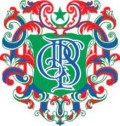Spectrum of Bacterial Pathogens Isolated from Burn Wound Patients
DOI:
https://doi.org/10.48036/apims.v14i3.169Keywords:
MRSA, P. aeruginosa, Staphylococcus aureus, Gram positiveAbstract
Objectives: To find out the spectrum of bacterial pathogens isolated from pus samples of infected burn sites and to come across the sample collection according to post burn day and distribution of Gram positive and negative isolates in samples in relation to time of collection.
Methodology: It is a prospective, non-randomized, descriptive study conducted at Microbiology laboratory, Pathology department and burn care center (BCC), Pakistan Institute of Medical Sciences Islamabad for 4 months, from 2nd April to 3rd August 2013. One hundred and ten clinical isolates from 68 patients were collected. Sample collection from referred patients was done at the time of admission and from admitted patients was done during changing their dressings. The sample collected was immediately transferred to the Pathology laboratory and submitted for Culturing. The samples were inoculated on Blood agar and MacConkey agar (Oxoid USA) and incubated aerobically at 35+ 2 0C for 18 -48 hours. After incubation the pathogens were identified with the help of colonial Morphology, gram stain reaction, biochemical tests, and API 20E.
Results: Out of 68 samples 110 burn wound pathogens were isolated. 47% of the samples yielded single etiological agent whereas the rest of 53 % had polymicrobial etiology. Gram negatives were in majority 81.82% and Gram positives were18.18 %. The samples in which only one isolate was obtained were 32. Amongst them P. aeruginosa was isolated in (65.6%) of samples. In 31 samples two isolates were obtained. In such samples coexistence of P .aeruginosa and K. pneumoniae was most prevalent i.e. in 10 (32.25%). There were only five samples in which more than two isolates were obtained. Amongst Gram negatives were the predominant bacterial pathogens out of them P. aeruginosa were 53 %. MRSA made the major bulk of Gram positives that is 65 %, the rest 35% were Staph aureus MSSA. Gram positives were isolated more in the first week samples i.e. 30% as compared to the subsequent weeks.
Conclusion: It was concluded that more than 80 % of bacterial isolates of burn wound infections were Gram negative and less than 20% were Gram positive i-e Staphylococcus aureus.
Downloads
Published
Issue
Section
License
Copyright (c) 2018 Sadia Ikram, Niveen Asher, Bilal Farooq, Aksa Rehman

This work is licensed under a Creative Commons Attribution-NonCommercial 4.0 International License.
This is an Open Access article distributed under the terms of the Creative Commons Attribution License (https://creativecommons.














